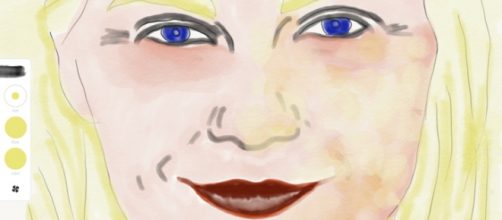Artists looking to move into the digital realm of painting and drawing might be a bit hesitant to put down their real world art supplies and consider a tool such as the Apple Pencil and the iPad Pro, and for good reasons. There's nothing quite like the tactile experience of working on a large canvas or a piece of paper. The fine art world that coexists with museums and collectors will also surely be slow to catch up to modern methods of art making. That being said, the Apple Pencil and iPad Pro come in a close second to making art in the real world when conventional processes aren't available or aren't convenient.
This series of tips and tricks will provide basic tutorials and information for anyone thinking about or just starting their adventure into the world of digital art. This time around we'll investigate Adobe Sketch and specifically focus on the watercolor brush.
Adobe Sketch is a free app to download
As with many of Adobe's apps in the Apple App Store, Sketch is free. Many free apps are a waste of time, but Sketch is an exception to that rule and while it doesn't offer an extensive number of brushes and options, it certainly offers enough to make it a powerful and fun tool for basic sketches and paintings. The basic options for each tool, pencil, pen, marker, oil paint and watercolor are primarily the same, offering size, flow and color choices, the basic functions needed to start and finish any work of art.
You can even bring in a photo from your camera roll that you can use as a reference point to start your new project. This might be especially helpful when deciding on skin, hair or eye colors if you're subject is human.
Watercolor while avoiding all the paint spills
There are times when conventional art like painting is impossible, like perhaps during a flight or layover or while on vacation.
Or perhaps you have a paint allergy and can no longer work in the medium. There are a multitude of reasons why traditional painting or drawing is not an option, and the iPad Pro with Apple Pencil could be a solution to your dilemma. Maybe it's late at night and you want to paint an idea but you're already in bed. No need to worry about spilling paint on your pillow and blanket, you can now turn on your iPad Pro and within minutes capture the inspiration.
This sort of innovation is exactly what Steve Jobs preached for many years when he asked the public to think different. It's hard not to imagine Jobs being very impressed with the advancements that his company has made with the iPad Pro and Apple Pencil. It's the kind of technological leaps that could one day be as important to art as the iPod was for music.
Apple Pencil is more intuitive and responsive than you'd expect
When first using the Apple Pencil it might seem like you don't have full control of the tool. This is normal, and from experience it takes a full week of using it to really begin to understand how it works. Especially with the watercolor tool, you will need to change the size of the brush, the flow, which is basically opacity and how much liquid is used in the stroke, and find the right color all by trial and error.
Like any new form of art, trial and error and experimenting will be the best way to dive in and find out what you can and can't do. If you need some guidelines don't be afraid to first use the pencil or pen tool to draw some basic shapes and forms, which can be fleshed out later with the watercolor brush. What was perhaps most shocking is how there seemed like zero latency in touching the Pencil to the tablet and how much control was able to be dialed in once the process felt comfortable and normal. The fan control was perhaps the most interesting aspect that took some trial and error to get right. Essentially you will paint and then tap the fan icon to dry your work and freeze it in place. Next time we'll look into the app Concepts, which blends drawing with vector tools and claims to be "The digital design sketchbook of the future."

